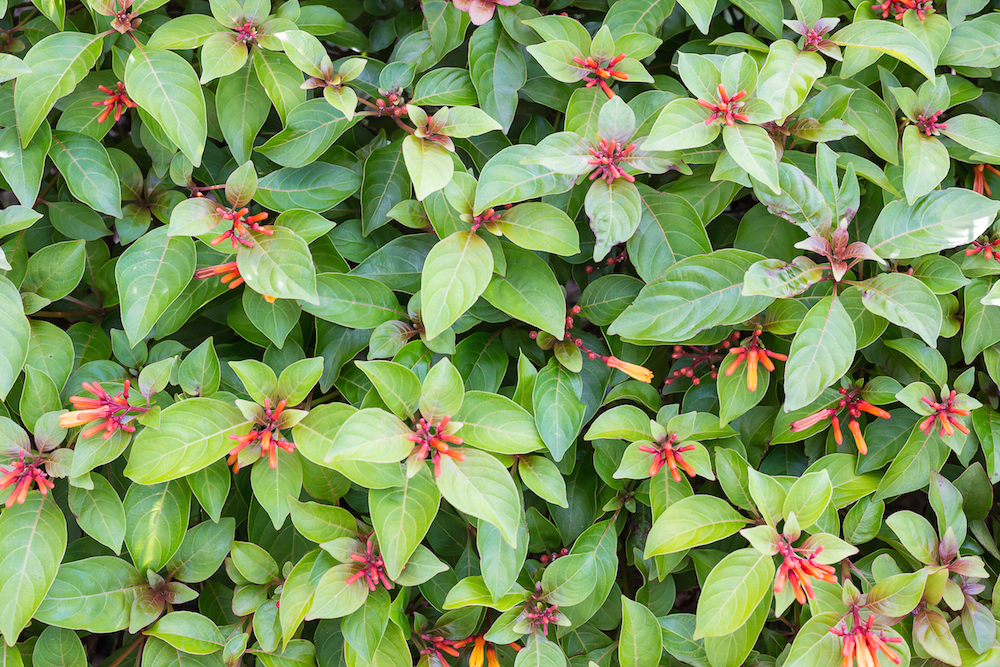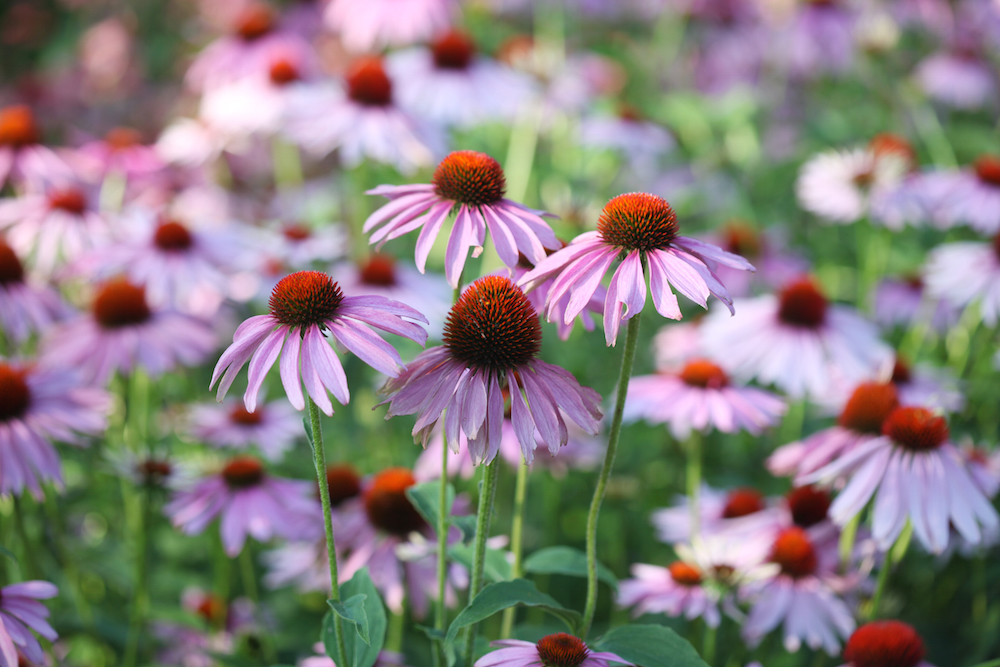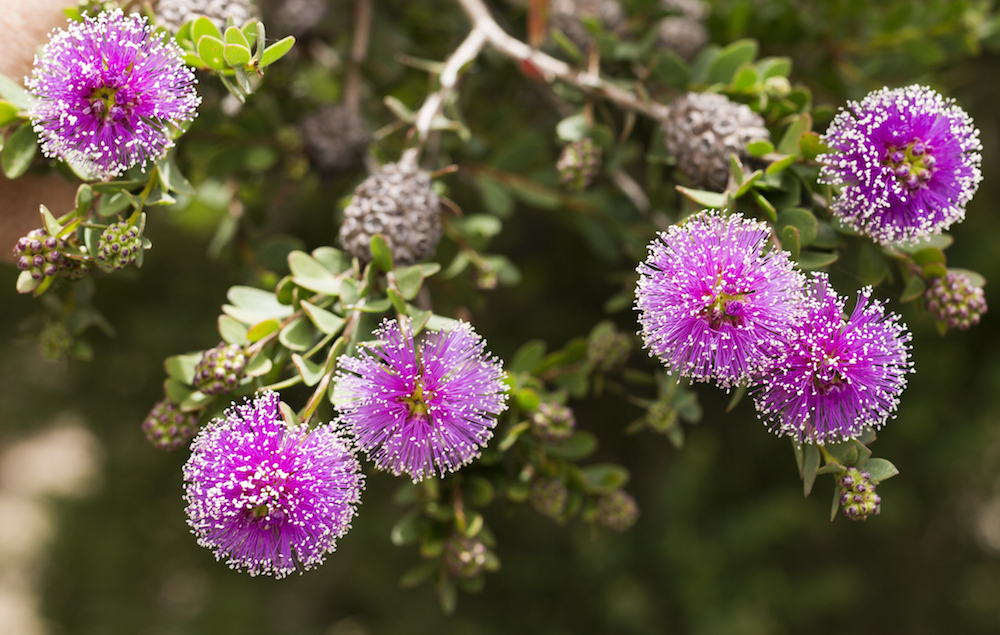Whether you are expanding your landscape, revamping it or putting your artistic talents to use with a blank canvas, “naturescaping,” installing plants native to Florida, will result in the most ecologically functional landscape. Native plants need little water and no chemical herbicides, pesticides and fertilizers. They have had centuries to acclimate to the environment and can get along just fine without a lot of fuss.
The native plants shown here are not only marvelously ornamental, but you can take advantage of their medicinal or cosmetic properties.
1. The Beautyberry
The American beautyberry is a small shrub with long, graceful branches. The blue, violet, pink, or white funnel-shaped flowers bloom in late spring through early summer. The violet drupes or fruits begin to ripen in August or September and remain long after the leaves have dropped off. The bare branches with the lustrous bead-like berries are stunning additions to dried flower arrangements. The berries aren’t as tasty when picked right from the bush, but they make a delicious jelly and a full-body wine.
Crushed beautyberry leaves and berries repel mosquitoes and other biting insects as well as ticks. Tea made from the leaves and roots is used to soak away rheumatism and fevers. Beautyberry extract applied to newly scarred skin will prevent it from darkening. Scientific studies have shown that the extract is an effective skin-whitening agent because it suppresses melanin production.
2. The Firebush
The firebush is an exceptionally colorful evergreen that boasts brilliant orange-red or scarlet tubular flowers year-round. The stems and leaves are red for most of the year. As the berries ripen, they turn from green to yellow to red to black. You can eat the berries right off the bush, but not everyone takes to the rather bitter aftertaste. The berries, however, make for a zesty wine and a syrup that will jazz up your pancakes.
Boil two handfuls of leaves, stems and flowers in two gallons of water for ten minutes. Let it cool, and you have a remedy for almost every skin problem, including sores, rashes, wounds, fungus, and insect stings. Native Americans have traditionally used the leaves topically for headaches.
3. The Purple Coneflower
Also known as purple coneflower, has flamboyant, daisy-like purple flowers that bloom throughout the summer, bloom again through frost, take a break for a while, and then be back with more flower buds. The bloom has a brown spiny center with the petals growing from the underneath and angled backward away from the center (forming a cone shape). The leaves are lance-like with pointed ends, growing irregularly along the length of a stalk.
Echinacea helps to strengthen the immune system and is used to treat inflammation, infection, and cold symptoms. Cut off a portion of the root, wash it and hang it in the sun to dry. Crush the dried piece of root until it becomes a powder. Boil 1 gram of the powder in water for 10 minutes. Strain the liquid into a cup to remove the powder sediment. Usually, the liquid is taken internally, but you can also apply it topically to tone the skin, regenerate skin cells and treat acne.
4. Common Yarrow
This fragrant plant is a hardy perennial with showy clusters of flowers and sprays of filigree-like feathery foliage. Cut off the spent flowers, and you will get more buds almost immediately. The plants tend to arrange themselves into tidy bunches, which makes them popular for filling in empty spots in gardens and edging a walkway.
A tea made from the leaves and stems can calm an upset stomach, relieve a fever and alleviate cold symptoms, anxiety and stress. Used topically, the tea can dry up oily skin on the face, minimize the appearance of large pores, remove leftover traces of makeup and treat sunburn and rashes.
5. Powder Puff Tree
Powder puff trees are actually large shrubs that grow on a single trunk—like a tree. The 2- to 3-inch flower puffs in pink or white appear off and on all year, more so in warm weather. The oblong, compound leaves, two inches wide, emerge with a rosy tinge but mature to a rich dark green and fold up at night when their day is done.
Remove the bark from the tree, dry it, grind it into a powder and keep it in a glass jar for when you need it. To make tea, use ½ teaspoon of fresh or dried bark steeped in a cup of boiling water. Drink three to four times a day for its antioxidant value or to relieve allergic reactions. The ground bark can also be placed in a sterile cloth to heal wounds. The bark’s natural steroid compounds work as local anesthetic, keeping away pain for a few hours. When you are anxious, depressed or stressed, enjoy a cup of tea brewed from the dried flowers to help with calming.
Source: LawnStarter
The post 5 Florida Plants with Health Benefits appeared first on Palm Beach Illustrated.





